Angus Cooper’s bespoke Porsche 356 puts an end to any debate about classic Porsche purity with its stunning combination of modified proportions and period mechanicals.
Sticking out in a manner befitting the most finely sculpted automotive sore thumb you’ve ever seen, Angus Cooper’s shapely Porsche 356 creation epitomises the dare-to-be-different attitude that that exists within classic car culture. You have the traditionalists at one end, those enthusiasts who strive for OEM perfection and there’s the more radical extremity, those who choose to craft a thoroughbred into their personal vision of automotive perfection. It’s no surprise then that the occasional clash of opinions occurs, usually resulting in the hot-rodders defending their bespoke creations against the purist mindset. And then there are cars like Cooper’s cleverly named “Coopster” 356 custom.
While the build harbours some pretty radical changes, the essence of Porsche’s iconic debut to the production sports car world remains. The retention of much of the car’s “Porscheness” has much to do with the way Cooper’s 356 journey began. In his pre-Porsche years, Cooper’s automotive history was dotted with enthusiast vehicles of varying marques and forms. Porsche had long occupied a space in the back of his car consciousness, but it wasn’t until a late-90s meeting with Auckland classic racer and collector, Neil Tolich, that Cooper managed to dip his toes into the Porsche paddling pool.
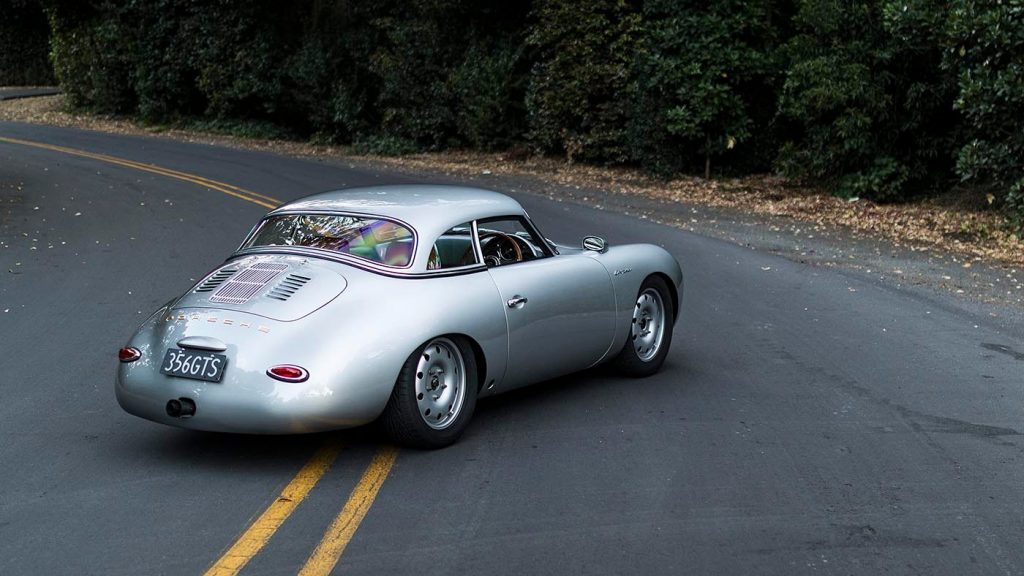
He recalls his first 356 experience with a smile, eyes sparkling. “Neil threw me the keys to his 356 Speedster, and said, well, go for a drive.” The section of road from Matapouri to Tutukaka in Northland is only a mere seven kilometres long but the twists and undulations proved an addictive introduction to the art of Porsche and the driving experience. Handing the keys back to Tolich, Cooper vowed he’d own a 356 in the future. Little did he know at the time that this was the tip of an aircooled iceberg, and not one but three examples of Porsche’s earliest sports car would eventually grace his garage. It didn’t happen overnight though. Several years later, around 2005, Angus took possession of his first 356, a left-hand drive 356C model brought in from Colorado.
A few years passed and the bright red coupe was sold. While it remains among Kiwi Porsche circles today, Cooper couldn’t help but suffer from a case of buyer’s regret. Roll on 356 number two, this time a 356B bought out of Christchurch, which he describes as “an okay car really.” The silver 356B became something of a rolling restoration. Rejuvenated to better than new condition, the 356B was pivotal in developing relationships that would prove fruitful for the Coopster build.
Firstly, Precision Autowerk of Glenfield tackled the paint following a minor traffic altercation. Secondly, Cooper entered the teams event at the 2013 Ellerslie Intermarque Concours d’Elegance alongside Kip Colvey of One At A Time, a man widely acknowledged as the go-to guy for 356s in New Zealand. The pair’s matching silver 356s managed second place, a surprise result and maybe even more surprising given the 356’s next chapter. Outlaw.
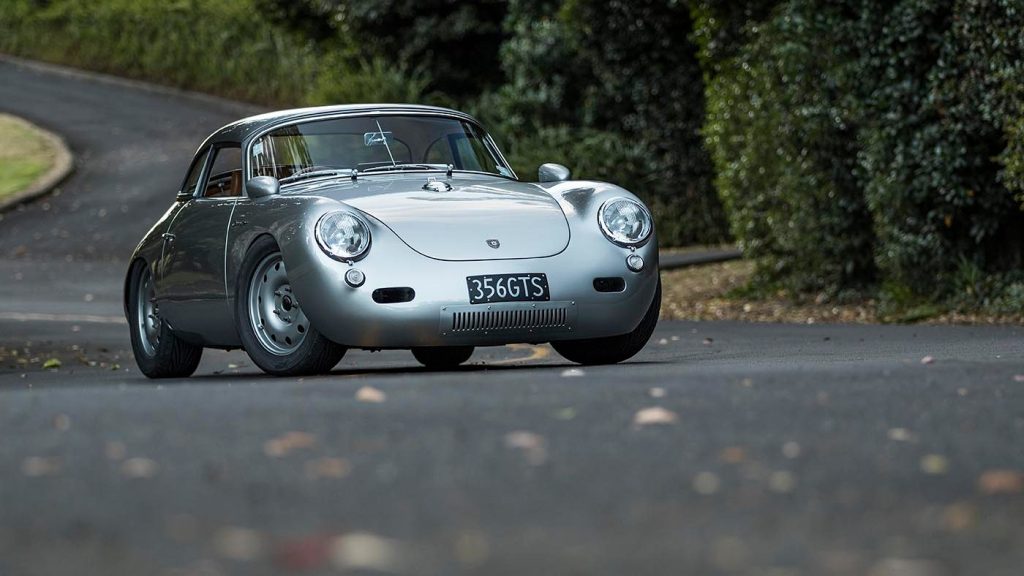
The term “Outlaw” is notorious among Porsche circles, simply referring to the modification of models deemed better suited for the purist touch. It’s a distinctive style, epitomised by a period look. In Cooper’s case he deleted the bumpers, added red racing stripes, leather bonnet and engine lid straps, and a lowered stance. Carefully selected period Tecnomagnesio racing-style alloys topped off the package.
Naturally a little concern was shown from the purist side of the camp, but eventually the “Outlaw” 356 was onsold to make way for something even more notorious, the Coopster. Cooper’s inspiration for the Coopster drew heavily from the creations of Rod Emory. The California-based 356 specialist is equally infamous and revered for his 356-derived builds, largely credited with igniting the Outlaw trend among the aircooled Porsche community in the late 1990s. Built to order, an Emory Outlaw can be specified to individual taste and engineered for an improved driving experience. Beyond the Outlaw cars are the Emory Specials. As the name suggests, the Specials represent a handful of radically altered 356s. Roof chops, smoothed and channelled panels, interior upgrades and even bespoke mechanical packages exemplify the breed.
These inspired Cooper with confidence to build a similar machine, half a world away. It took confidence because the 356 design is iconic enough that to modify it risks destroying its character. Cooper went as far as visiting the Emory Motorsport workshops to gain a tangible appreciation for Emory’s style. He also sought his blessing to build his own interpretation, a tribute to the Emory enterprise. Emory graciously obliged, offering Cooper a tour of the cars on hand, yet keeping his cards close to his chest where craftsmanship methods were concerned. With the blessing gained and confidence growing, Cooper set the ball rolling.
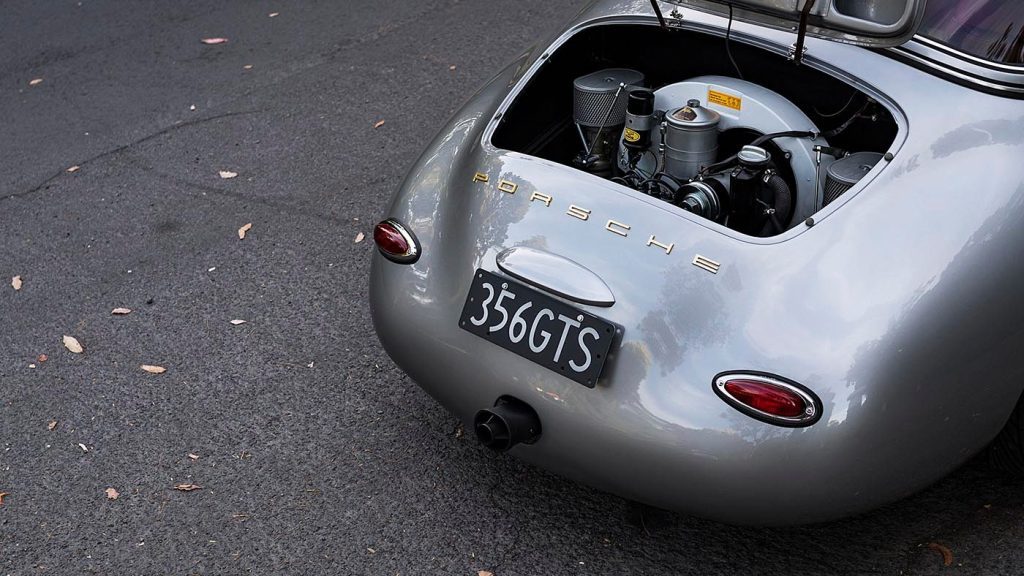
Kip Colvey again proved instrumental in supplying a USA-import, left-hand drive 1963 Porsche 356B hardtop as the project base. Rotten, incomplete, and one of the less desirable models to boot, the 356 offered an ideal start. Yet while Colvey’s 356 expertise was to be drawn on throughout the project, coachbuilding was not a skill he offered. The scale of metalwork planned for the build called for an expert, yet the man Cooper settled on to shape the steel into his vision didn’t claim to be one. At least not in the beginning.
Fortunately, Cooper came across Dick Mol, of Picton. Originally trained as an auto trimmer, Mol later moved on to mechanics and the business of exhausts. An odd choice on the face of it, until an explanation. “Dick’s one of those guys who can do anything,” Cooper explains, “when he got married, his wife bought him a hammer.” Mol subsequently built a house, an insight into his ability to pick up a skill and develop it. Panel work had become a hobby, yet with the Coopster build Mol considered it almost as an apprenticeship.
An apprenticeship lasting over 2100 hours, culminating in a curvaceous qualification. With guidance from Colvey regarding the 356 structure, Mol set about almost two year’s worth of rolling, shaping, cutting and grinding sheet metal in the confines of Colvey’s workshop. Many jobs needed to be done twice, a byproduct of learning the craft as he went, but eventually the shell resembled the Emory tribute Cooper craved. All the while, Cooper was in a constant period of research, sourcing parts and planning. He was always one step ahead to ensure the project ran smoothly. The body modifications aren’t all conspicuous to the uninitiated. At the nose of the car, the valance is rolled under, reshaped and fitted with a central vent to feed an oil cooler.
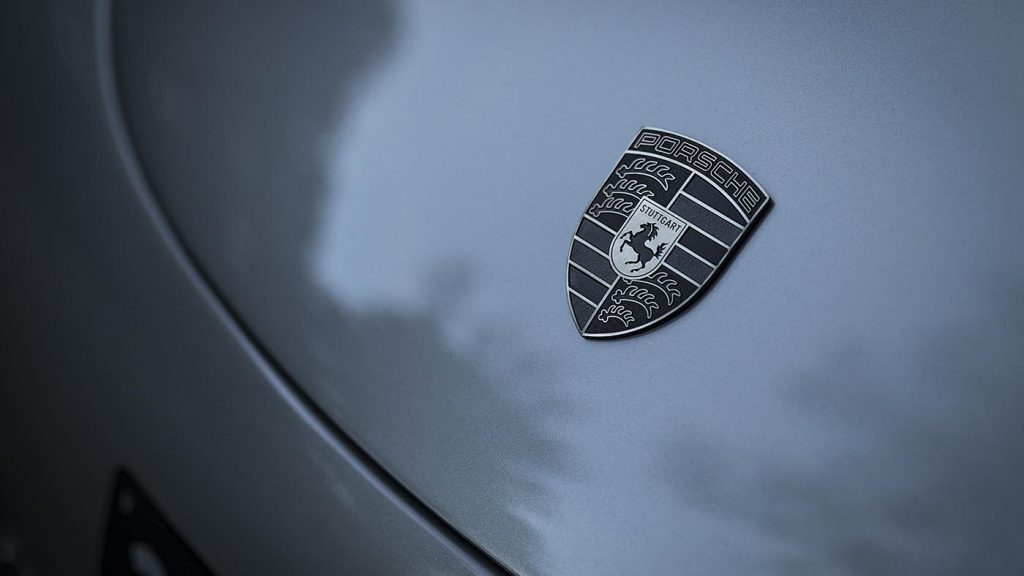
Gone are the stock side vents, deleted in favour of gaping brake cooling ducts. The headlights are tilted back and lowered in at the leading edge of the guards, mimicking the sleeker appearance of an earlier 356. The bonnet, normally seen with a pronounced hump in the centre now features a flatter profile. This particular complex panel, comprising compound curves, Cooper says was a huge challenge. The net result is a front end reminiscent of a 550 Spider; smooth, clean and unobstructed. The windscreen is raked, meeting the front edge of a roofline now minus an inch of its height, as well as being detachable.
The sills, contrasting the straight, abrupt finish of the stock 356B, now roll underneath the car, taking the lower door shut line with them. Beyond the doors, the structure of the 356 is reinforced with 3mm plate steel, and the rear seat structure redesigned to create a parcel shelf with storage boxes beneath.
From the B-pillar aft, every panel is massaged. From the raised wheel arches to the modified engine lid and the deeper rear valance, the styling is impressively balanced. The overall design takes cues from two of Emory’s Specials, melded together by Mol’s impressive abilities, all learnt on the job. Finishing off the curves is a coat of Porsche GT silver, the shell shipped to Auckland to Precision Autowerk for prep and application. Mechanically, the 356 is all Porsche. Beneath the louvred engine lid, a flat four still pounds its characteristic offbeat note.
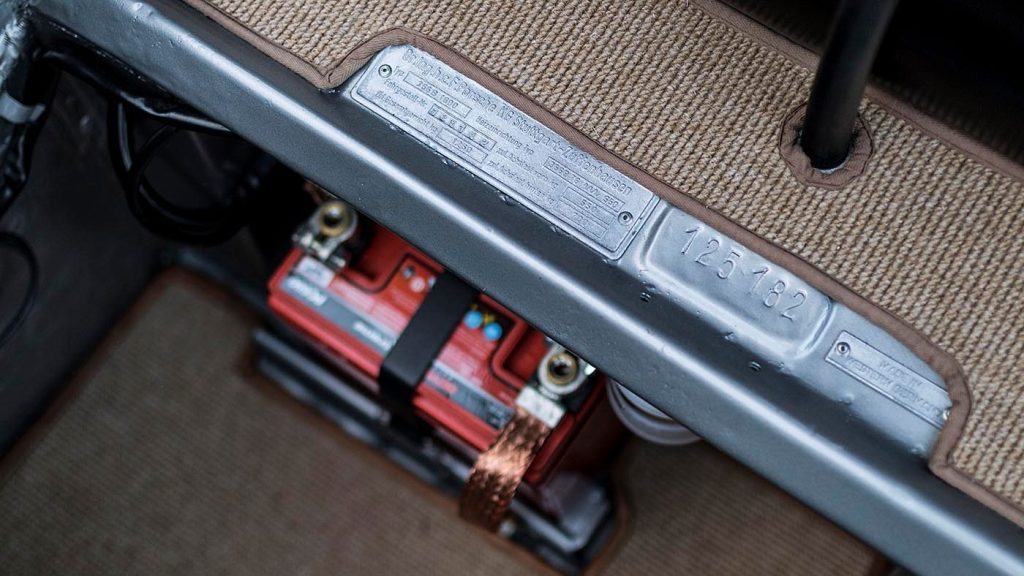
Far from its original 1600cc, the Coopster now runs a 2132cc unit from US specialist John Willhoit. Supplied as a short block, Colvey pieced the engine together using a pair of Weber 44mm carbs, but on first glance the engine compartment looks like it could be a stock 356 affair. Angus reckons it’s good for around 160hp, plenty to propel the featherweight through scenic, twisty tarmac with the raucous exhaust singing. Four ratios are provided by a 356 gearbox, raised in the chassis along with the engine. At each corner, the wheels are originally Porsche 964 space savers. Presenting a stark, period race look they tuck into the arches courtesy of uprated 356 suspension with adjustable shocks.
Hubs and disc brakes lifted from a later 356C ensure both increased stopping power and the requisite bolt pattern for the wheels. Inside, Mol applied his upholstery knowhow with Porsche 944 seats heavily modified and trimmed in brown leather – the same as the Singer Porsches – while retaining electric adjustment, heating and a lower mounting height to accommodate Cooper’s 183cm-plus frame in comfort beneath the lowered roofline. Mol formed a custom dash to accommodate the switch to right-hand drive, and it’s styled after an early 356 Roadster’s. The three-gauge binnacle houses an early 911 tachometer, and a speedo and combo gauge sourced from a Porsche 904 racer. There’s even a hidden Bluetooth receiver, amp and powered audio system.
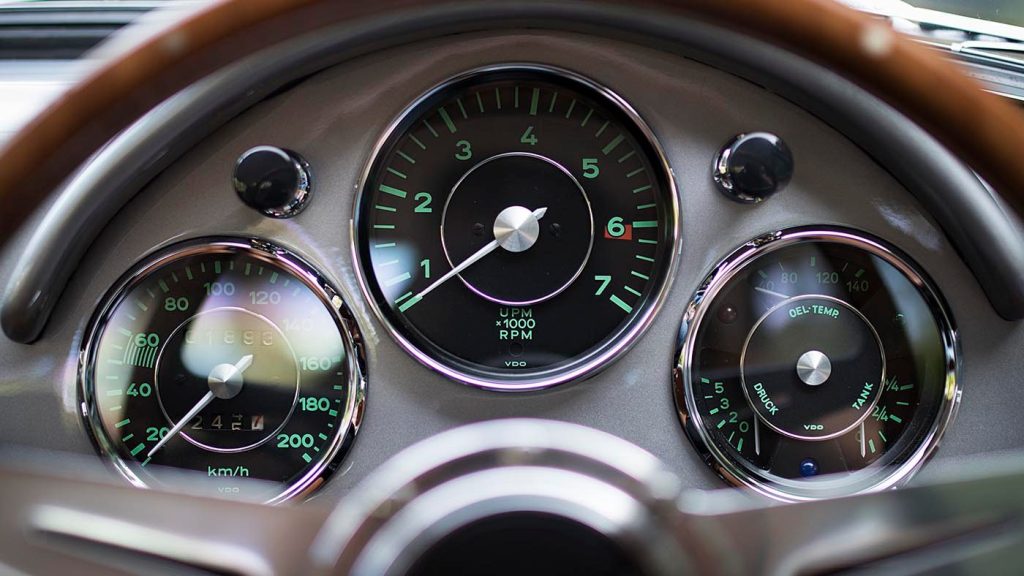
With the finished product ready to roll from the One At A Time workshop, what better way to get to know it than a road trip from Marlborough to Auckland. Starting as he means to continue with the car, Cooper simply jumped in the seat, turned the key and drove home over two days.
Performing admirably, the Coopster made it into Auckland on a rainy day. Purists beware. The Coopster has hit the Kiwi classic car scene, and for those who move in for a closer look, you just might like it. Add the passion, knowledge and general friendliness of Cooper, it’s a build that enriches the fabric of the Kiwi Porsche community.


